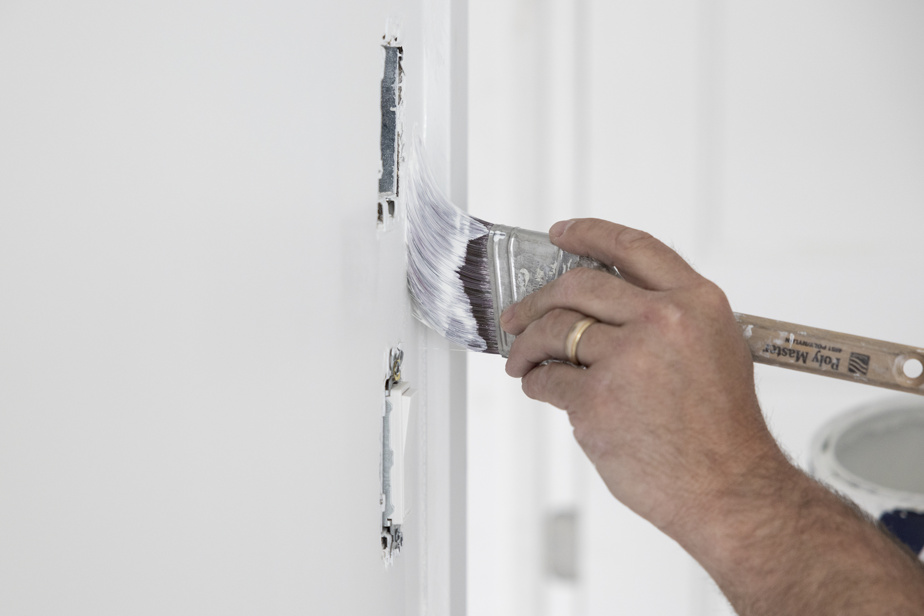It is recognized that painting is an economical solution for changing the decor or refreshing a room. In addition, this task is accessible to all. For this manual activity to remain pleasant, it still requires a minimum of planning and preparation.
The secret to a successful painting project is preparation. First you have to organize the places. The room should not be cluttered. We want the work area to be free so as not to interfere with movement. Also, make sure you have proper lighting. If necessary, protect the floor with a coating and do not forget to draw up an inventory of all the necessary tools.
Next, prepare the surface for painting. Watch out for dust and dirt. The surface must be clean, grease-free; if necessary, clean it. There should be no holes, splits or other snags. If so, repair the surface before painting.
“Following a repair, the plaster or joint compound creates a very smooth surface, while the old surface has an ‘orange peel’ style relief. To help you, you can use a paint that builds in relief — a bit like a self-leveler,” explains Patrick Mathon, of Entreprises I.C.K.
Ready to proceed? Remove the plates on the outlets and switches, then mask the areas to be protected with tape. To make the activity pleasant, take care to be clean during the work. Clean the rim of the pot to prevent the paint from sliding all the way to the floor.
1. Surface preparation is essential. Sand lightly to remove any imperfections. A pro tip: sand between coats to keep the surface clean and residue-free, perfectly smooth to the touch. Sanding also creates a light adhesion for the next coat. Use 120 or 150 grit paper. Of course, do not sand the top coat.
2. Start with cutting. Analyze your execution time carefully, because the paint you apply during the decoupage must merge with the one you will apply on the entire surface afterwards. Application Tip: Imagine the brush as an extension of your hand and hold it at an angle. Be careful not to crush it too much, you will avoid flaring.
Depending on the work area, it is necessary to work by placing the bristles of the brush well. For example, the tip in the wall corners. If necessary, rearrange the bristles to use the maximum angle of the brush. “The line won’t look good the first time, even if you try to make it as perfect as possible, but that’s okay. The second layer will be the recovery,” says Patrick Mathon.
3. Apply paint. If necessary, we generally start with the ceilings and the interior of the wardrobes before the walls of the room. Load the roll. Be careful not to put too much paint in the roller. On the other hand, there must be enough.
During application, avoid uneven pressure. Do not go to the edge of the wall to unload the roll, otherwise there is a risk of sliding. For a uniform finish, the roller strokes must be equal and always at the same height. “Roller bristles have a meaning, explains Patrick Mathon, a bit like velvet. For the top coat, make sure that the bristles of the roller are in the same direction over the entire surface. »
4. Allow to dry before replacing furniture or installing decorations. Read the product data sheet.
We see it more and more: yes, it is possible to paint the wooden steps. The secret to the success of this project: sanding the wood to remove the luster and create an eye-catcher. The application of a primer is also necessary. Use a hybrid primer (alkyd emulsion). Use 100% acrylic paint for floors. She is very resistant. Cut out the outline, then the entire surface. Let dry according to the technical data sheet.















